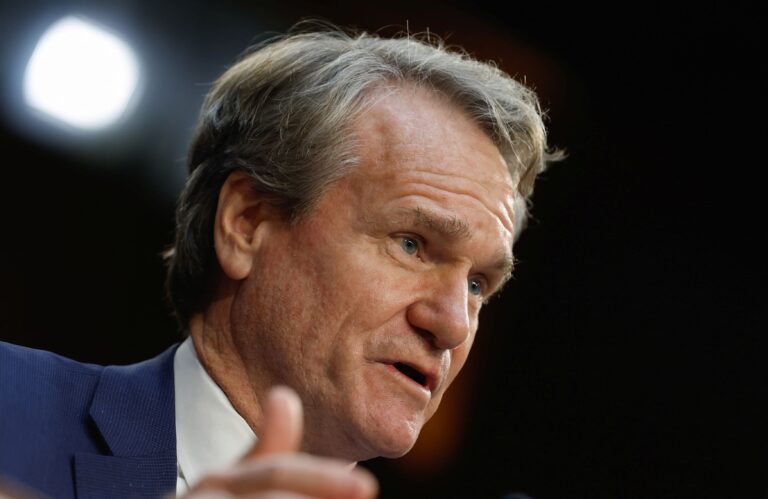Moynihan said consumer spending through card transactions, checks and ATM withdrawals has grown about 3.5% this year to roughly $4 trillion, a significant slowdown from the roughly 10% growth rate seen in May 2023, he said.
“Both of our client bases, who are very involved in running the U.S. economy, are saying, ‘Right? I’m treading carefully and I’m slowing down,'” Moynihan said, referring to consumers and businesses.
He said the economic slowdown began last summer and was consistent with the “very low growth” environment from 2016 to 2018.
Nearly a year after the Federal Reserve last raised interest rates, consumers and businesses are struggling with inflation and borrowing costs that remain higher than they’re used to. The Fed began efforts to tame inflation by raising its benchmark interest rate starting in March 2022 in the hopes that it can slow the economy without tipping it into a recession.
Many economists believe the Fed is on track to achieve that feat, which has helped send stocks to new highs this year.But consumers are still feeling the strain of rising prices for goods and services that are spilling over into U.S. businesses, from McDonald’s to discount retailers, as Americans adjust their behavior.
Moynihan said grocery shoppers are visiting more stores in search of bargains. “One of the statistics we see is people are going to three grocery stores instead of two,” he said.
Moynihan said total spending growth is now slowing, but that’s fueled by travel and entertainment, while “everything outside of insurance payments is moderating.” He noted that growth in rent payments has slowed.
“We need to keep consumers in the game in the U.S. economy, because [they’re] “Their trust is a big part of it,” Moynihan said. “They’re becoming a little bit more shaky, and it’s because of everything that’s going on around them.”
The same is true for small businesses, said the CEO of Bank of America, the second-largest U.S. bank by assets after JPMorgan Chase & Co. Moynihan and other bank CEOs have a bird’s-eye view of the economy, covering homes and businesses across the U.S.
“Business owners are saying, ‘We’re still happy with the overall business, but we’re not hiring as many people as we used to. We’re buying equipment at a slower pace. We’re buying software at a slower pace,'” Moynihan said.
Moynihan said his bank’s economists believe it will take until the end of next year for inflation to be under control and that the Fed will begin cutting interest rates before the end of the year. The U.S. economy will probably grow at around 2 percent and a recession will be avoided, he added.

